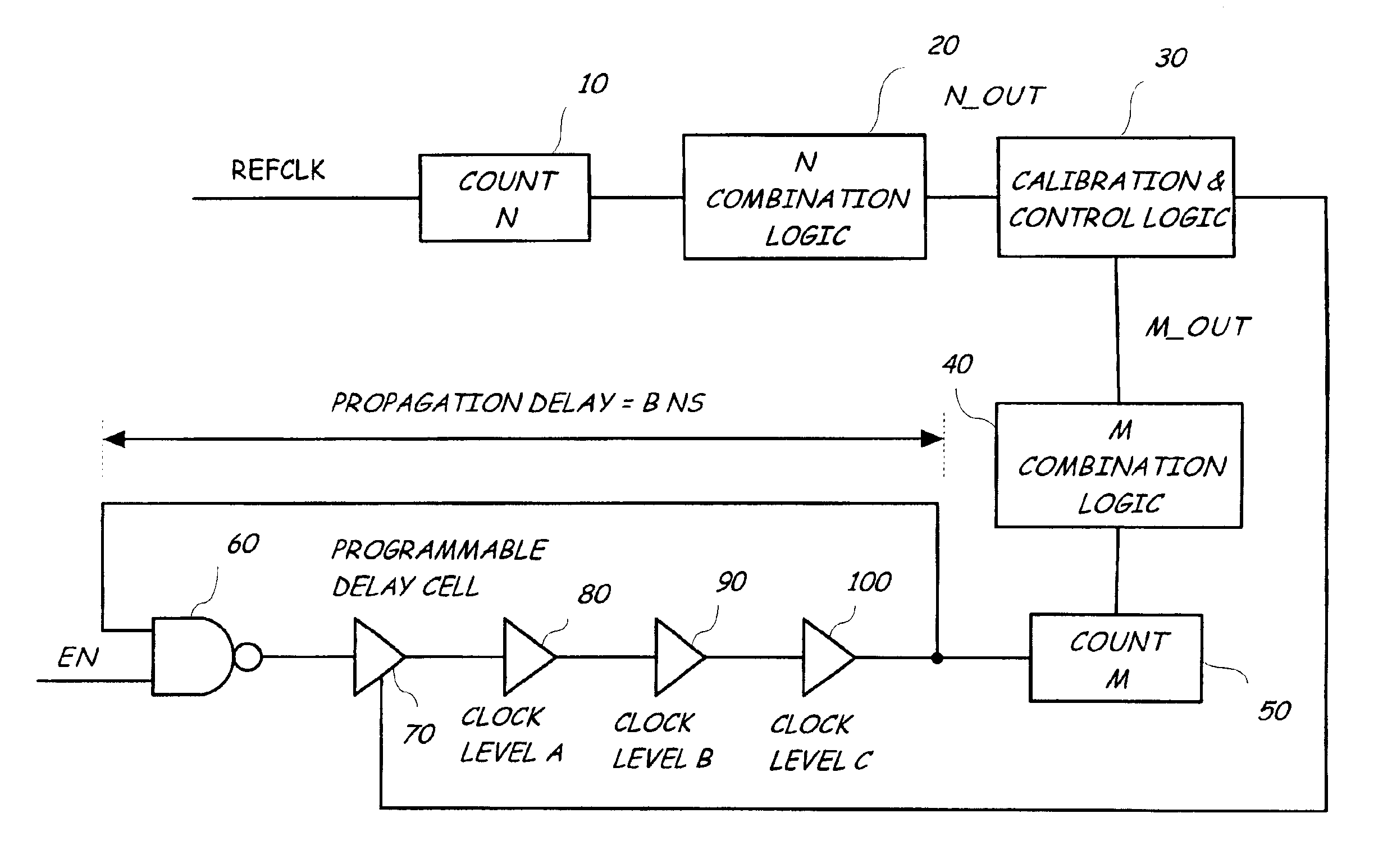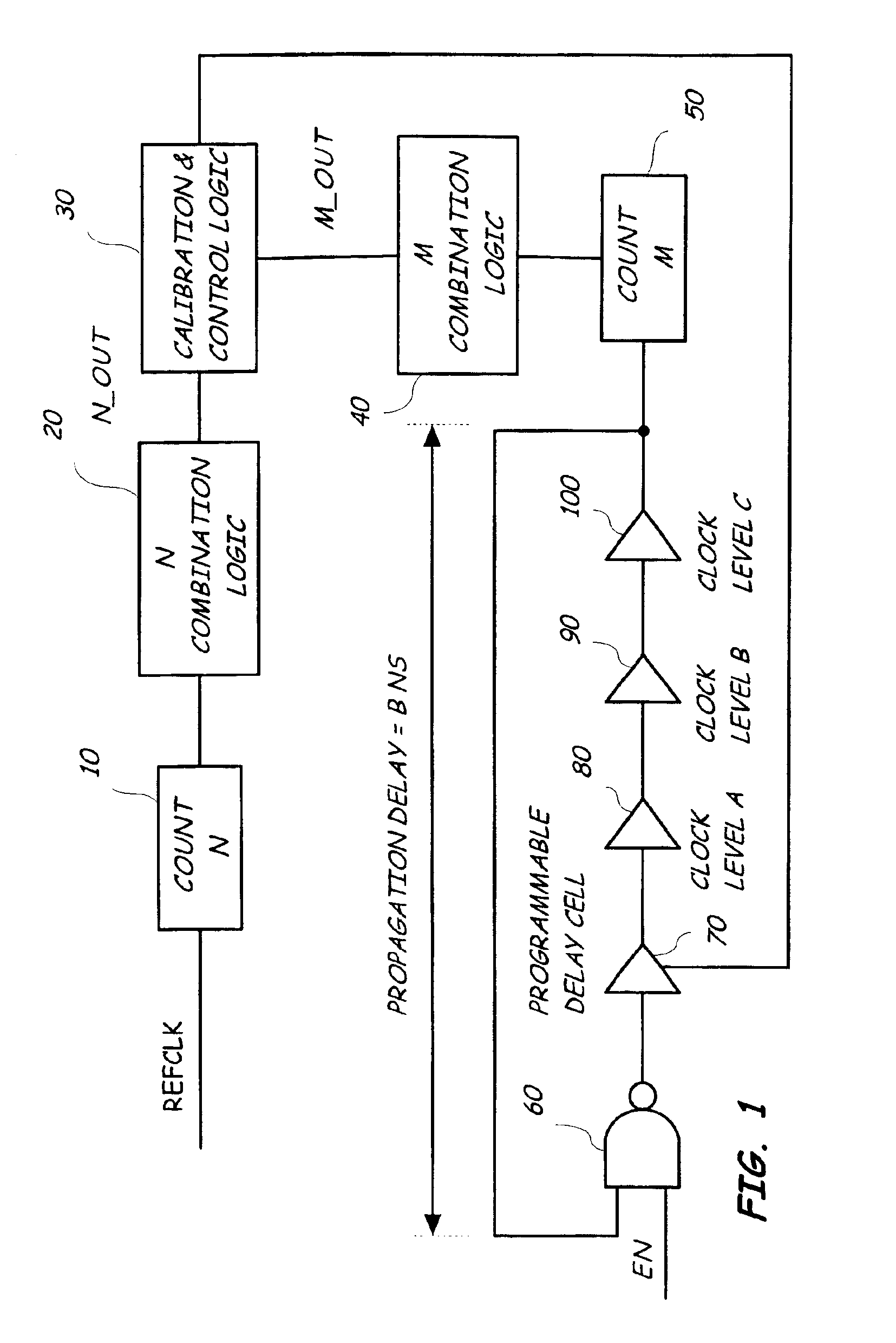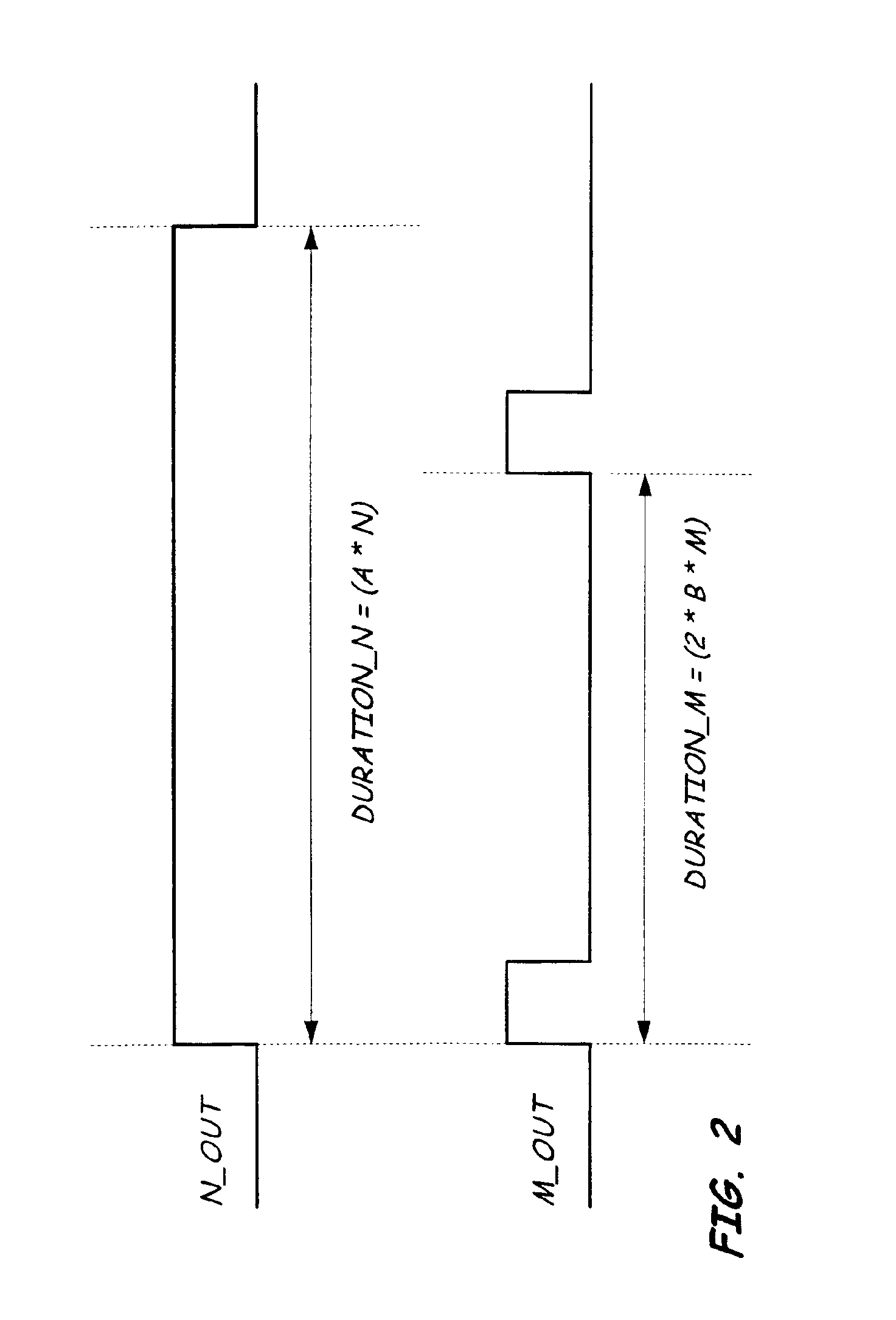Digital programmable delay scheme with automatic calibration
a digital programmable delay and automatic calibration technology, applied in pulse generators, pulse manipulation, pulse techniques, etc., can solve the problems of changing the value of the delay, the state of the timing delay technology, and the difficulty of accurately maintaining the clock signal at a desired frequency over pvt, so as to achieve accurate and relatively easy program and set the delay, save power, and calibrate the set delay
- Summary
- Abstract
- Description
- Claims
- Application Information
AI Technical Summary
Benefits of technology
Problems solved by technology
Method used
Image
Examples
Embodiment Construction
[0019]Reference will now be made in detail to the presently preferred embodiments of the invention, examples of which are illustrated in the accompanying drawings.
[0020]The present invention relates to a method and circuit for setting a programmable delay cell in a signal path and using a reference clock to calibrate the oscillator clock frequency of an oscillator that includes the delay cell. The circuit preferably uses two counting circuits or counters that are controlled by calibration and control logic in which one counter is clocked by the reference clock and the other is clocked by the oscillator circuit clock. In general, after a predetermined time, the calibration and control logic compares the two count values and determines if the programmable delay cell of the oscillator circuit needs to be adjusted. In a preferred embodiment, the sequence followed in the method is to clear the counters, start the counters, stop the counters, compare the counts, and, then, accordingly adj...
PUM
 Login to View More
Login to View More Abstract
Description
Claims
Application Information
 Login to View More
Login to View More - R&D
- Intellectual Property
- Life Sciences
- Materials
- Tech Scout
- Unparalleled Data Quality
- Higher Quality Content
- 60% Fewer Hallucinations
Browse by: Latest US Patents, China's latest patents, Technical Efficacy Thesaurus, Application Domain, Technology Topic, Popular Technical Reports.
© 2025 PatSnap. All rights reserved.Legal|Privacy policy|Modern Slavery Act Transparency Statement|Sitemap|About US| Contact US: help@patsnap.com



